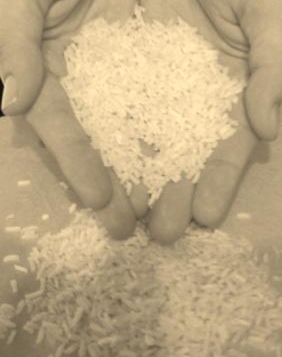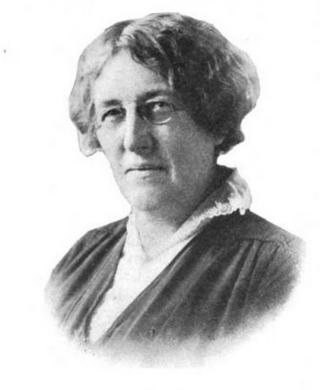Related Research Articles

The United States Food and Drug Administration is a federal agency of the Department of Health and Human Services. The FDA is responsible for protecting and promoting public health through the control and supervision of food safety, tobacco products, caffeine products, dietary supplements, prescription and over-the-counter pharmaceutical drugs (medications), vaccines, biopharmaceuticals, blood transfusions, medical devices, electromagnetic radiation emitting devices (ERED), cosmetics, animal foods & feed and veterinary products.

The Federal Meat Inspection Act of 1906 (FMIA) is an American law that makes it illegal to adulterate or misbrand meat and meat products being sold as food, and ensures that meat and meat products are slaughtered and processed under strictly regulated sanitary conditions. These requirements also apply to imported meat products, which must be inspected under equivalent foreign standards. United States Department of Agriculture (USDA) inspection of poultry was added by the Poultry Products Inspection Act of 1957 (PPIA). The Food, Drug, and Cosmetic Act authorizes the Food and Drug Administration (FDA) to provide inspection services for all livestock and poultry species not listed in the FMIA or PPIA, including venison and buffalo. The Agricultural Marketing Act authorizes the USDA to offer voluntary, fee-for-service inspection services for these same species.

The Pure Food and Drug Act of 1906, also known as Dr. Wiley's Law, was the first of a series of significant consumer protection laws which was enacted by Congress in the 20th century and led to the creation of the Food and Drug Administration. Its main purpose was to ban foreign and interstate traffic in adulterated or mislabeled food and drug products, and it directed the U.S. Bureau of Chemistry to inspect products and refer offenders to prosecutors. It required that active ingredients be placed on the label of a drug's packaging and that drugs could not fall below purity levels established by the United States Pharmacopeia or the National Formulary.

Harvey Washington Wiley was an American chemist who advocated successfully for the passage of the landmark Pure Food and Drug Act of 1906 and subsequently worked at the Good Housekeeping Institute laboratories. He was the first commissioner of the United States Food and Drug Administration.
Food quality is a concept often based on the organoleptic characteristics and nutritional value of food. Producers reducing potential pathogens and other hazards through food safety practices is another important factor in gauging standards. A food's origin, and even its branding, can play a role in how consumers perceive the quality of products.

The United States Federal Food, Drug, and Cosmetic Act is a set of laws passed by the United States Congress in 1938 giving authority to the U.S. Food and Drug Administration (FDA) to oversee the safety of food, drugs, medical devices, and cosmetics. The FDA's principal representative with members of congress during its drafting was Charles W. Crawford. A principal author of this law was Royal S. Copeland, a three-term U.S. senator from New York. In 1968, the Electronic Product Radiation Control provisions were added to the FD&C. Also in that year the FDA formed the Drug Efficacy Study Implementation (DESI) to incorporate into FD&C regulations the recommendations from a National Academy of Sciences investigation of effectiveness of previously marketed drugs. The act has been amended many times, most recently to add requirements about bioterrorism preparations.

The Food and Drugs Act is an act of the Parliament of Canada regarding the production, import, export, transport across provinces and sale of food, drugs, contraceptive devices and cosmetics. It was first passed in 1920 and most recently revised in 1985. It attempts to ensure that these products are safe, that their ingredients are disclosed and that drugs are effective and are not sold as food or cosmetics. It also states that cures for disease listed in Schedule A, cannot be advertised to the general public.

Food policy is the area of public policy concerning how food is produced, processed, distributed, purchased, or provided. Food policies are designed to influence the operation of the food and agriculture system balanced with ensuring human health needs. This often includes decision-making around production and processing techniques, marketing, availability, utilization, and consumption of food, in the interest of meeting or furthering social objectives. Food policy can be promulgated on any level, from local to global, and by a government agency, business, or organization. Food policymakers engage in activities such as regulation of food-related industries, establishing eligibility standards for food assistance programs for the poor, ensuring safety of the food supply, food labeling, and even the qualifications of a product to be considered organic.
Title 21 of the United States Code governs Food and Drugs in the United States Code (U.S.C.).

Food safety is used as a scientific method/discipline describing handling, preparation, and storage of food in ways that prevent foodborne illness. The occurrence of two or more cases of a similar illness resulting from the ingestion of a common food is known as a food-borne disease outbreak. This includes a number of routines that should be followed to avoid potential health hazards. In this way, food safety often overlaps with food defense to prevent harm to consumers. The tracks within this line of thought are safety between industry and the market and then between the market and the consumer. In considering industry-to-market practices, food safety considerations include the origins of food including the practices relating to food labeling, food hygiene, food additives and pesticide residues, as well as policies on biotechnology and food and guidelines for the management of governmental import and export inspection and certification systems for foods. In considering market-to-consumer practices, the usual thought is that food ought to be safe in the market and the concern is safe delivery and preparation of the food for the consumer. Food safety, nutrition and food security are closely related. Unhealthy food creates a cycle of disease and malnutrition that affects infants and adults as well.
The Center for Food Safety and Applied Nutrition is the branch of the United States Food and Drug Administration (FDA) that regulates food, dietary supplements, and cosmetics, as opposed to drugs, biologics, medical devices, and radiological products, which also fall under the purview of the FDA.
100,000,000 Guinea Pigs: Dangers in Everyday Foods, Drugs, and Cosmetics is a book written by Arthur Kallet and F. J. Schlink first released in 1933 by the Vanguard Press and manufactured in the United States of America. Its central argument propounds that the American population is being used as guinea pigs in a giant experiment undertaken by the American producers of food stuffs and patent medicines and the like. Kallet and Schlink premise the book as being "written in the interest of the consumer, who does not yet realize that he is being used as a guinea pig..."

The regulation of food and dietary supplements by the U.S. Food and Drug Administration is a process governed by various statutes enacted by the United States Congress and interpreted by the U.S. Food and Drug Administration ("FDA"). Pursuant to the Federal Food, Drug, and Cosmetic Act and accompanying legislation, the FDA has authority to oversee the quality of substances sold as food in the United States, and to monitor claims made in the labeling about both the composition and the health benefits of foods.
Adulteration is a legal offense and when the food fails to meet the legal standards set by the government, it is said to have been Adulterated Food. One form of adulteration is the addition of another substance to a food item in order to increase the quantity of the food item in raw form or prepared form, which results in the loss of the actual quality of the food item. These substances may be either available food items or non-food items. Among meat and meat products some of the items used to adulterate are water or ice, carcasses, or carcasses of animals other than the animal meant to be consumed. In the case of seafood, adulteration may refer to species substitution (mislabeling), which replaces the species identified on the product label with another species, or undisclosed processing methods, in which treatments such as additives, excessive glazing, or short-weighting are not disclosed to the consumer.

The Food Safety and Inspection Service (FSIS), an agency of the United States Department of Agriculture (USDA), is the public health regulatory agency responsible for ensuring that United States' commercial supply of meat, poultry, and egg products is safe, wholesome, and correctly labeled and packaged. The FSIS draws its authority from the Federal Meat Inspection Act of 1906, the Poultry Products Inspection Act of 1957 and the Egg Products Inspection Act of 1970. The FSIS also acts as a national health department and is responsible for the safety of public food-related establishments as well as business investigation.
The Food and Drug Administration is a federal agency of the United States, formed in 1930.

Alice Lakey was an American activist supporting the Pure Foods Movement and the use of insurance. Lakey lectured, wrote, and lobbied extensively. She was instrumental in obtaining passage of the federal Pure Food and Drug Act of 1906, and in creating state laws to protect the quality of milk in 1909. At a time when women were not allowed to vote, she was credited with mobilizing over one million women to write letters in support of the food and drug act through her work with women's groups.
Consumer Health Laws are laws that ensure that health products are safe and effective and that health professionals are competent; that government agencies enforce the laws and keep the public informed; professional, voluntary, and business organizations that serve as consumer advocates, monitor government agencies that issue safety regulations, and provide trustworthy information about health products and services; education of the consumer to permit freedom of choice based on an understanding of scientific data rather than misleading information; action by individuals to register complaints when they have been deceived, misled, overcharged, or victimized by frauds.

Food safety in the United States relates to the processing, packaging, and storage of food in a way that prevents food-borne illness within the United States. The beginning of regulation on food safety in the United States started in the early 1900s, when several outbreaks sparked the need for litigation managing food in the food industry. Over the next few decades, the United States created several government agencies in an effort to better understand contaminants in food and to regulate these impurities. Many laws regarding food safety in the United States have been created and amended since the beginning of the 1900s. Food makers and their products are inspected and regulated by the Food and Drug Administration and the Department of Agriculture.
References
- Cavers, David F. "The Food, Drug, and Cosmetic Act of 1938: Its Legislative History and Its Substantive Provisions." Law and Contemporary Problems 6 (1939): 2-42. doi : 10.2307/1189727
- Garraty, John A., and Mark C. Carnes. American Nation. 12th ed. Vol. 1. New York: Pearson Longman, 2005.
- Goodwin, Lorine S. The Pure Food and Drink Crusaders. Jefferson: McFarland &Co, 1999.
- Janssen, Wallace F. "The Story of the Laws Behind the Labels." The Food and Drug Administration. Hauppauge: Nova Science, 2003. 23-35.
- Junod, Suzane W. "Food Standards in the United States: the case of the peanut butter and jelly sandwich." Food, Science, Policy and Regulation in the Twentieth Century. New York: Routledge, 2000. 167-89.
- Schlosser, Eric. Fast Food Nation. New York: Houghton Mifflin, 2001.
- Swann, John P. "History of the FDA." The Food and Drug Administration. Hauppauge: Nova Science, 2003. 9-16.
- Wax, Paul M. "Elixirs, Diluents, and the Passage of the 1938 Federal Food, Drug and Cosmetic Act." History of Medicine 122 (1995): 456-61.
- Young, James H. "The Long Struggle for 1906 Law." The Food and Drug Administration. Hauppauge: Nova Science, 2003. 17-22.